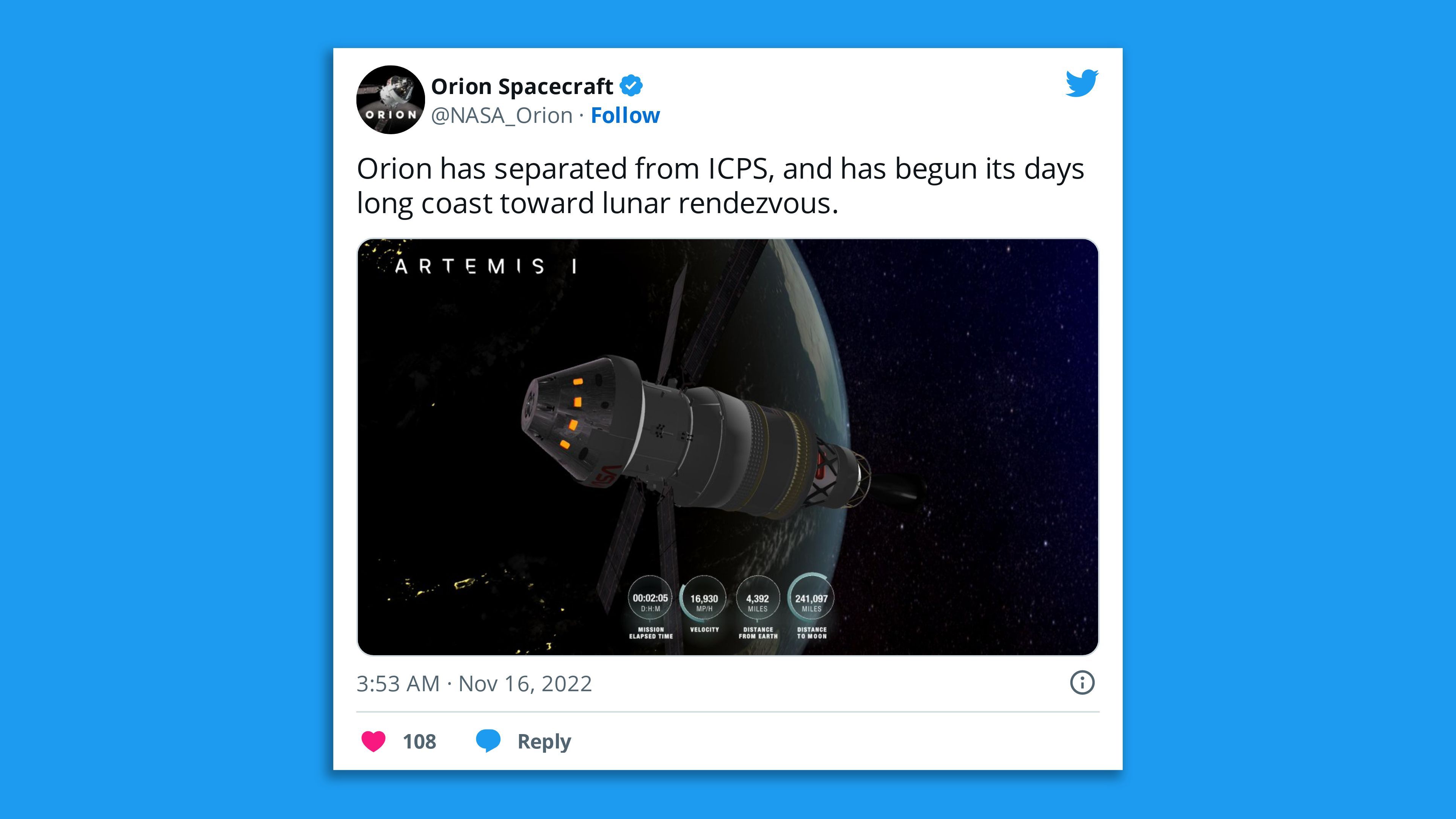NASA's Space Launch System rocket took flight for the first time Wednesday, ushering in a new era of exploration for the space agency.
Why it matters: This uncrewed launch — called Artemis I — is expected to pave the way for NASA to one day send astronauts to the Moon for the first time since the end of the Apollo program in the 1970s.

Details: The SLS launched an Orion capsule that will journey around the Moon before coming back to Earth for a splashdown expected in December.
- The SLS took flight at 1:47am ET from Kennedy Space Center in Cape Canaveral, Florida.
- The launch comes after years of technical development delays and months of launch delays caused by fuel leaks and even a hurricane hitting the multi-billion rocket while it was on its pad.
The big picture: Wednesday's launch is effectively a technology test of the rocket and capsule ahead of putting people on board.
- NASA aims to land the first woman and first person of color on the Moon using the SLS and Orion in 2025.
- The space agency plans to one day build a small Gateway space station in lunar orbit and use the Moon as a testing ground for human missions to Mars.
But, but, but: There's still a long way to go before NASA can send people to the Moon aboard the Orion and SLS.
- SpaceX is currently building a lunar lander based on its Starship that's meant to bring astronauts to the lunar surface under a contract with the space agency.
- NASA is also working with two companies to build spacesuits for use on the Moon.
- Both of those tasks are major technical hurdles that NASA and these private companies will need to overcome before a crewed lunar landing is possible.
Editor's note: This article has been updated with a screenshot of the NASA Orion Spacecraft Twitter page's tweet.







